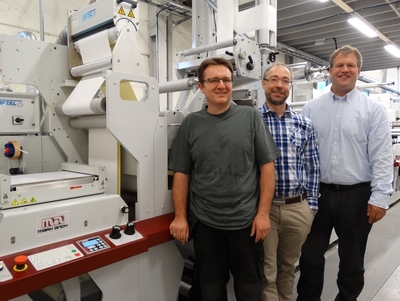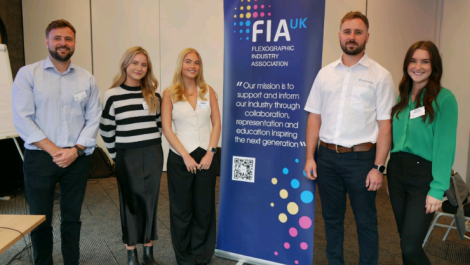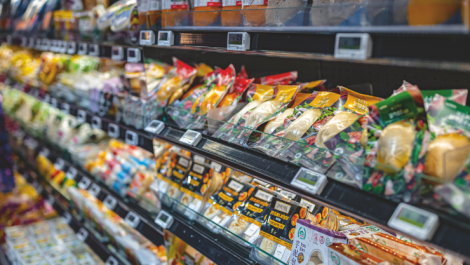Beginning life in 1985 as a label broker, PSI is one of Norway’s leading single-source suppliers of labels and labelling technology. Over the course of the next 20 years, the company grew through acquisitions, and today has four label manufacturing plants, two in Norway and two in Sweden, and also continues its successful business in equipment supply. Nick Coombes reports from Tangen, north of Oslo.
Sales Manager at PSI, Lars Orbeck, explained, ‘We have flexo capacity here in Tangen and in Gothenburg, with digital presses in Oslo and Malmo. This gives us the diverse production capability we need to handle our customers’ work.’ The latest installation at the Tangen plant is a Mark Andy Performance Series P5 line, with a 13″ web width and eight UV-flexo print units. It joins a Mark Andy 2200 UV press and an older water based machine, and is the company’s first investment in flexo technology in Norway for 13 years.
Specified to move the company into new product areas like wraparounds, the P5 has Mark Andy’s ‘film package’, which includes a corona treater and web cleaner, as well as a chilled impression roller that allow the press to handle unsupported film. The new press, which was installed at the end of May, will also provide the company with additional capacity to supply labels to the meat and fish industries in Norway, which offer significant growth capacity for PSI.
Speaking for Convertec, Mark Andy’s agent in Scandinavia, Joakim Marcusson commented, ‘This P5 is well specified. It has delam/relam and web turn bars, cold foil, lamination, and the Mark Andy web translator that allows peel/reseal work. It is working inline with a turret rewinder, and most significant is that is has the new QCDC high-speed die cutting unit, which reduces die changeover times from typically 15 minutes to just 60 seconds!’
A former winner of the ‘Innovative Technology’ prize at the FlexoTech International Awards, QCDC is a simple concept that allows the operator to exchange dies through the press side frame using a trolley, rather than lifting or craning them in from above. This reduces effort and the risk of injury, and in addition offers die cutting speeds of up to 220 m/min, which matches the higher print speeds of modern presses and removes the die cutting bottleneck.
When fully on stream, it is estimated the P5 will double the company’s production capacity and provide the ability to meet the 30% annual growth target. In addition to the fish and meat industries, PSI sees great potential in supplying labels to the hospital market, and has added a dedicated salesperson to develop this business.
To maximise on the new press’ production capability, PSI knows that it needs to have its crews well trained. Offline preparation is the key to fast job changeovers and reduced material waste, and at present the majority of work is still paper based substrates, but this will change with the P5’s ability to handle unsupported film, and Orbeck is looking to build up the company’s wraparound business, demand for which is growing fast in Norway.






